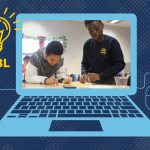This year’s back-to-school has been unlike any other. After scrambling to transition online last spring, schools across the nation have taken a summer’s long preparation to gear up for what is already an unconventionally challenging school year. Even with our new-found love for Zoom and other online educational tools, there is still a lot of ambiguity on how exactly school will go this year.
For starters, not everyone is on the same page. TAF has found that some students are set-up for success with generously school-provided laptops, quiet at-home desk spaces, and reliable internet connection; others still have yet to receive a laptop, or don’t have access to one at all. On top of that, students, parents and teachers are expected to navigate the complicated territory of virtual learning while still dealing with much of the residual impacts from the ongoing pandemic.
“A big obstacle is the technology itself – it’s hard to have a natural conversation with 25 students in a virtual classroom,” says Sarah Wilkes, TAF Program Manager of College Readiness at TAF@Saghalie. “Another big challenge is just getting kids to show up at the same rates we would if we were physically in school. I don’t know if the barrier is just lack of access to technology, or lack of time or space to work in.”


With this in mind, TAF@Saghalie and Washington Middle School, both of which are operating entirely online this fall, dedicated the first few days to supporting students and families. The TAF managed schools have been focusing on getting students set up for remote learning and addressing these technological obstacles head on.
“The first week of school was our STRONGstart, which really focused on social-emotional learning (SEL) and just trying to get the students engaged in the classroom,” shares Krishna Richardson-Daniels, STEMbyTAF Director at Washington Middle School. “We spent time making sure their technology was working properly and rectifying any glitches in the system before we had a hard start. It’s been really helpful for all of us, as we are all new to navigating this new platform called remote learning.”
This is TAF’s first year in Washington Middle School. While it’s difficult to build connections with the school community virtually, TAF’s WMS team continues to put a strong emphasis on community building and family outreach. The week before school started, the team spearheaded the first family town-hall meeting to address any questions around remote learning and the online implementation of the STEMbyTAF model.
“A lot of parents and students are really excited that TAF is at WMS, especially with the plethora of opportunities that come with our partnership,” Richardson-Daniels shared. “They’re especially looking forward to how PBL will be applied in the classrooms, the Robotics class, and how the makerspace will be restructured at the school.”
“It’s been really helpful for all of us, as we are all new to navigating this platform called remote learning.“
Krishna Richardson-Daniels
STEMbyTAF Director at Washington Middle School, TAF
While building connections with students’ families is a great first step, keeping them engaged and informed throughout the school year will require a collective effort to maintain strong communication. Richardson-Daniels’ goal is to first establish a parent advisory group where she can bring families into the fold and figure out how to keep them engaged.
“We need to ensure they know what’s happening on the ground with their students, what’s happening in their communities, what’s happening at the school, through the most effective mode of communication.” By centering the voices and needs of our students and families, TAF plans to make remote learning as accessible and equitable as possible.
So what about our students? With the shift to a more inhibited virtual learning environment and unpredictable attendance, student engagement in the classroom is another challenge we need to address with creative solutions. The STEMbyTAF model, however, is rooted in project-based learning, which helps maximise student engagement by keeping the learning relevant and applicable in real life.
In honor of the upcoming election, one TAF@Saghalie teacher decided to kick-off their 11th and 12th grade humanities class by jumping right into the topic of civics; breaking down the electoral system, explaining how mail-in voting works in Washington, and even providing students with resources on how to pre-register to vote.
“I love it when we can relate real-life current topics with what we’re learning in the classroom.” shares Daniel Chung, ASB president and senior at TAF@Saghlie. “A memorable moment in class recently was when we talked about my experience seeing a police altercation go down – we picked it apart and talked about what our rights are as US citizens, how things can be changed, and how politics really influences the lives of all those around us.”

By putting student-led inquiry at the center of learning, these online classes can spark the same curiosity, thoughtful conversation, and critical thinking in our students as if they were learning in person. It also gives students and teachers an opportunity to address the racial injustices happening all around us, creating space to discuss these issues in depth while it’s at the forefront of our minds.
“I love it when we can relate real-life current topics with what we’re learning in the classroom.”
Daniel Chung
ASB President & Senior at TAF@Saghalie
TAF is continuously adapting to the needs of our students, teachers, and schools in this new terrain of virtual learning, while still holding true to our goals of providing equitable education to those furthest from educational justice. As the year goes on, there will be numerous learning curves along the way, but it will unequivocally help us shape a better vision for education in the future.



